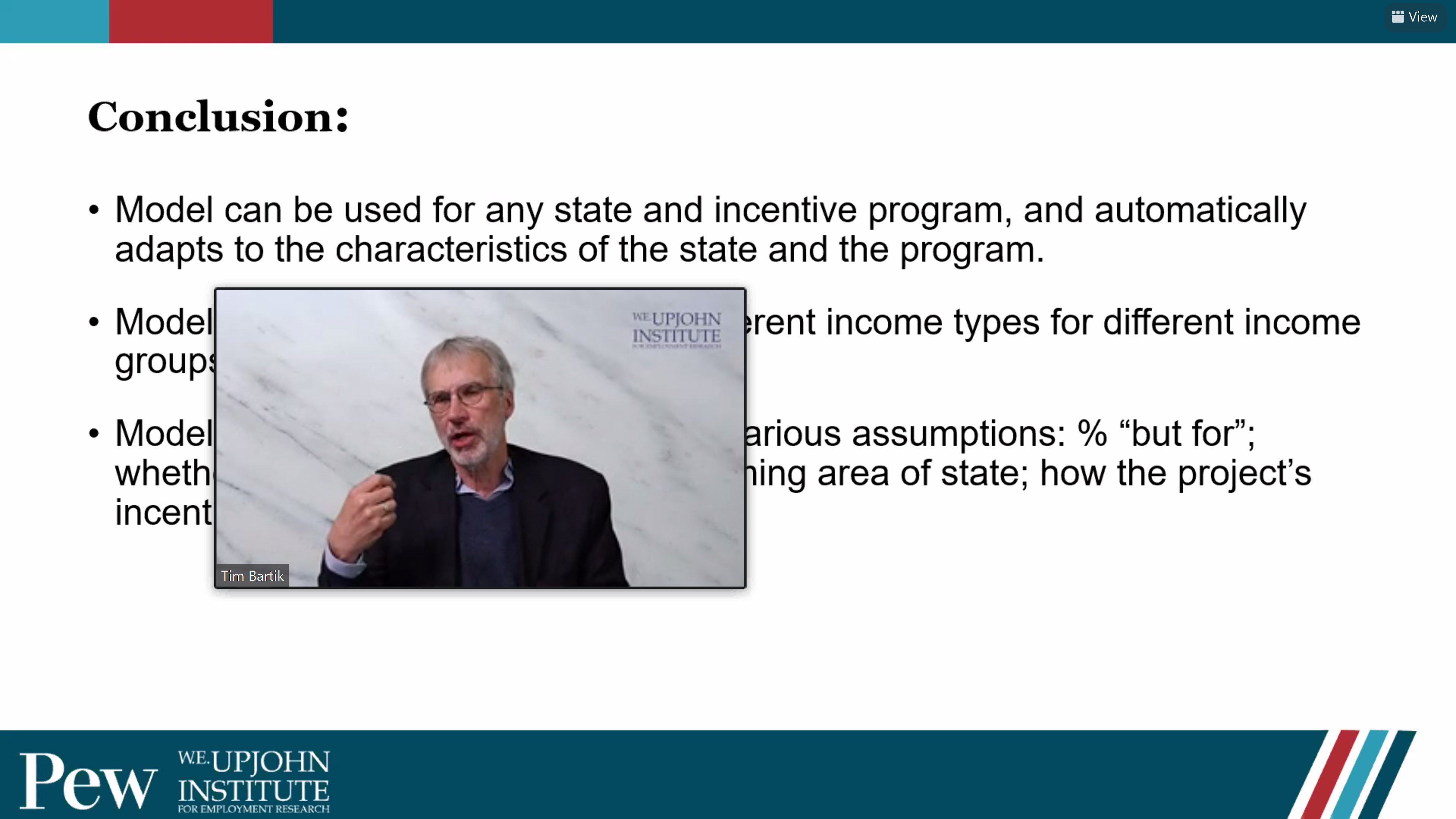
Upjohn Institute Senior Economist Tim Bartik today introduced a new model for evaluating business incentives in a webinar hosted by the Upjohn Institute and The Pew Charitable Trusts. The Bartik Benefit-Cost Model of Business Incentives is designed to provide a more realistic evaluation of incentive benefits than commonly used models.
The Bartik model acknowledges that incentives can create jobs, boost earnings, increase property values and provide state and local governments with more revenue. However, it also recognizes that incentives can have negative effects. For example, jobs may go to in-migrants rather than state residents, higher housing prices can hurt residents on fixed incomes and growth can bring needs for more public spending and new revenue.
The model focuses on tangible benefits and costs of incentives for state residents in terms of higher income per capita. It includes information on different income types such as earnings, higher property values and fiscal benefits, as well as the effects of incentives on different income groups.
The Bartik model is flexible and can evaluate a single incented project or an entire incentive program. It can evaluate a project or program with an arbitrary timetable of planned or actual job creation, as well as an arbitrary timetable of incentive payments.
By providing a clearer picture of incentives’ effects on the economy, the Bartik Benefit-Cost Model of Business Incentives can help policymakers make more informed decisions regarding incentive programs. Intended users include state audit bureaus, state legislative committees and agencies, state economic development agencies, public and private interest groups and journalists.
For more information and to access the model, click the button below.
